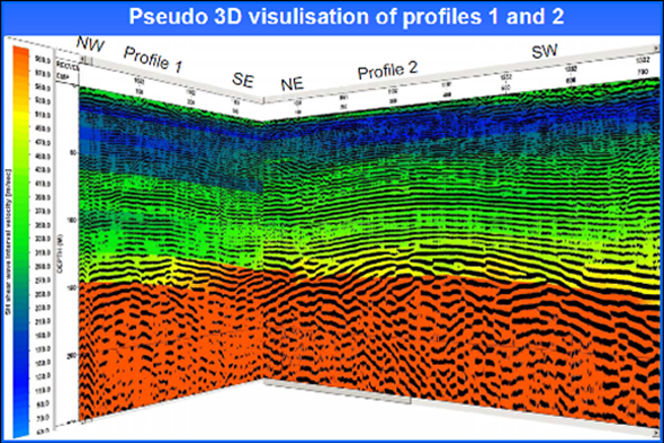Trondheim harbour stability assessment
The Trondheim harbor has been the locus for many large flow slides during the last century (L'Heureux et al., 2007; see reference list). The most recent of these occurred in 1990 just outside the mouth of the Nidelv River and mobilized ca. 5x106 m3 of sediments.
The mass movement took place as a liquefaction-induced flow slide outside the river outlet and developed into a lateral spread. The sediment mass slid along a weak layer of loose silty sand recognized by a distinct seismic reflection interpreted from high-resolution seismic data acquired offshore by NGU.
As the infrastructures of the Trondheim harbor have been progressively built over the fjord, it is very important to check if the geological settings observed offshore on seismic profiles are also present below the onshore part of the harbor.

Figure 8
Shear-wave seismic reflection profiles were therefore acquired in the Trondheim harbor in June 2008 by GGA, in cooperation with NGU and ICG and with the financial support of StatoilHydro. The results were beyond all expectations, with a penetration depth larger than 200m, i.e., below bedrock, and very good data quality (Figure 8).
The data are under processing and interpretation, and preliminary results were presented at the AGU Fall Meeting in December 2008. These land data will also be part of the Ph.D. Thesis of J.-S. L'Heureux (to be defended early 2009). This activity is part of the ICG Offshore Geohazards project.